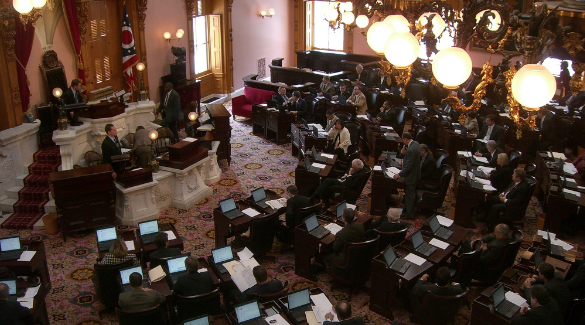Governor Mike DeWine signed a new two-year budget into law on Thursday, bringing an extended budget process to an end.
Ohio taxpayers watching the drama unfold were likely on pins and needles, with a number of key tax and economic policies on the negotiating table. So how did it all shake out?
For the most part, taxpayers came out well. The extended negotiations may have helped avoid some costly policies, while income tax cuts were delivered. That doesn’t mean it was all good as some unfortunately policies survived.
Income taxes
Taxpayers will enjoy a 4 percent income tax cut, along with the elimination of the two bottom tax brackets. However, this cut came in lower than even the House’s proposal. After the $800 million-plus annual gas tax increase, Ohio taxpayers will take the tax relief, but won’t get the 8 percent cut the Senate had proposed.
Small business tax credit
The move by the House to uncap taxes on small businesses, and limit the small business tax credit was removed in the Senate proposal, and fortunately stayed out of the final budget. This is an important win, and helps make up for income tax cuts not being as high as advertised.
Regulatory reform
A new requirement that 2 regulations are cut for any 1 introduced is a big win for the state economy. Ohio has one of the largest regulatory codes in the nation, and these reforms will keep it from getting worse, and start making the situation better.
School choice
The budget includes additional support for charter schools. It also boosts the EdChoice voucher program which provides scholarships for low-income students, and the cap on scholarships will increase with demand.
“All low-income students in grades K–12 will be eligible for EdChoice income-based scholarships starting in 2020–21; without this change, eligibility would have been limited to students in grades K–7.” (Fordham Institute).
Tax hike on vaping
There is bad news, and it starts with a tax hike on vape fluid in the form of a new 10-cents-per-milliliter tax on vaping fluid.
Ten cents per milliliter seems manageable at first glance, but some quick math reveals how damaging the tax would be for segments of the industry. A 120mL bottle of e-liquid, which retails at around $25, would be taxed at $12 under the most recent version of the budget. That’s a 48% tax, nearly triple the tax rate of most tobacco products and well over the $1.60 per pack cigarette tax rate (an effective rate of about 25%).
It is also concerning because vaping is now taxed at a rate similar to traditional cigarettes. Vaping should not be treated the same as cigarettes by government, in particular because this drives more people to keep smoking, even though evidence shows vaping is much safer.
Ridesharing & online sales tax collection
Governor DeWine line-item vetoed some language that tasked “technology platforms” with collecting sales taxes, perhaps retroactively. This is a positive, though the Governor and legislators maintain sales tax should be collected under current law. This may avoid larger problems and disputes, but does not mean rideshare drivers won’t be hit with sales taxes.
In another positive, a proposal OTR had opposed to hike taxes on online hotel bookings was dropped.
The operating budget includes some big wins for taxpayers. Following a gas tax increase has the effect of making the negatives and lost savings jump out, but taxpayers will see more money in their pockets from this budget, more school choice, and less regulation.
